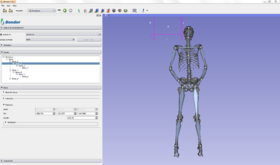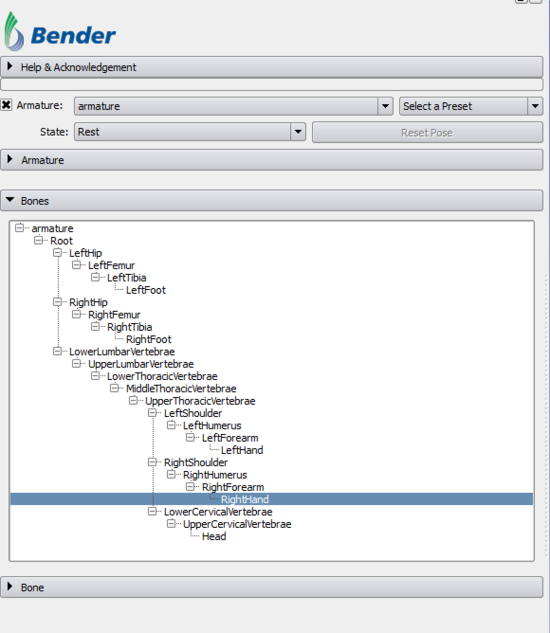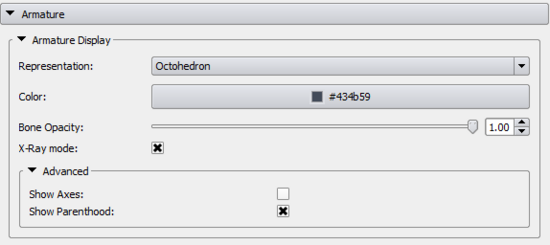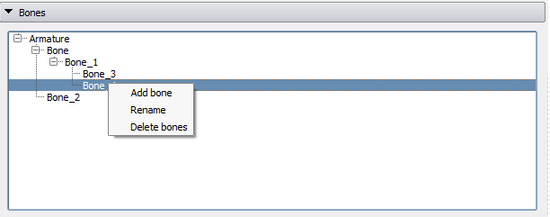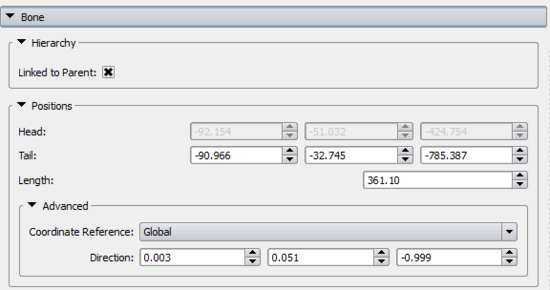Bender/Documentation/2.0/Modules/Armatures: Difference between revisions
From KitwarePublic
< Bender | Documentation | 2.0/Modules
Jump to navigationJump to search
| Line 31: | Line 31: | ||
{| width="100%" | {| width="100%" | ||
| valign="top"| | | valign="top"| | ||
== Overall == | |||
| align="right"| | | align="right"| | ||
| Line 39: | Line 39: | ||
{| width="100%" | {| width="100%" | ||
| valign="top"| | | valign="top"| | ||
== Armature == | |||
| align="right"| | | align="right"| | ||
| Line 47: | Line 47: | ||
{| width="100%" | {| width="100%" | ||
| valign="top"| | | valign="top"| | ||
== Bones == | |||
| align="right"| | | align="right"| | ||
| Line 55: | Line 55: | ||
{| width="100%" | {| width="100%" | ||
| valign="top"| | | valign="top"| | ||
== Bone == | |||
| align="right"| | | align="right"| | ||
Revision as of 15:15, 27 March 2013
Introduction and Acknowledgement
Author: Johan Andruejol, Kitware
Contributor #1: Julien Finet, Kitware
Acknowledgements: This work is supported by the Air Force Research Laboratories.
Contact: Julien Finet
Module Description
The Armatures module creates, edits and animates (poses) bone armatures using forward kinematic.
A bone is defined by its head (start point) and its tail (end point). Bones are organized in an armature structure that handles interaction between bones.
An armature has two modes:
- Rest mode: bones are added, edited or removed.
- Pose mode: bones are animated with forward kinematic. In this mode, the user can only rotate the bones around its head.
The module is split in three parts:
- The panel Armature controls the properties of all the bones of the armature.
- The panel Bones lists the bones hierarchy of the current armature.
- The last panel Bone controls the properties of the currently selected bone.
Use Cases
Tutorials
Panels and their use
Overall |
Armature |
Bones |
Bone |
Similar Modules
- Bender modules: Workflow
- Slicer modules: Annotations
